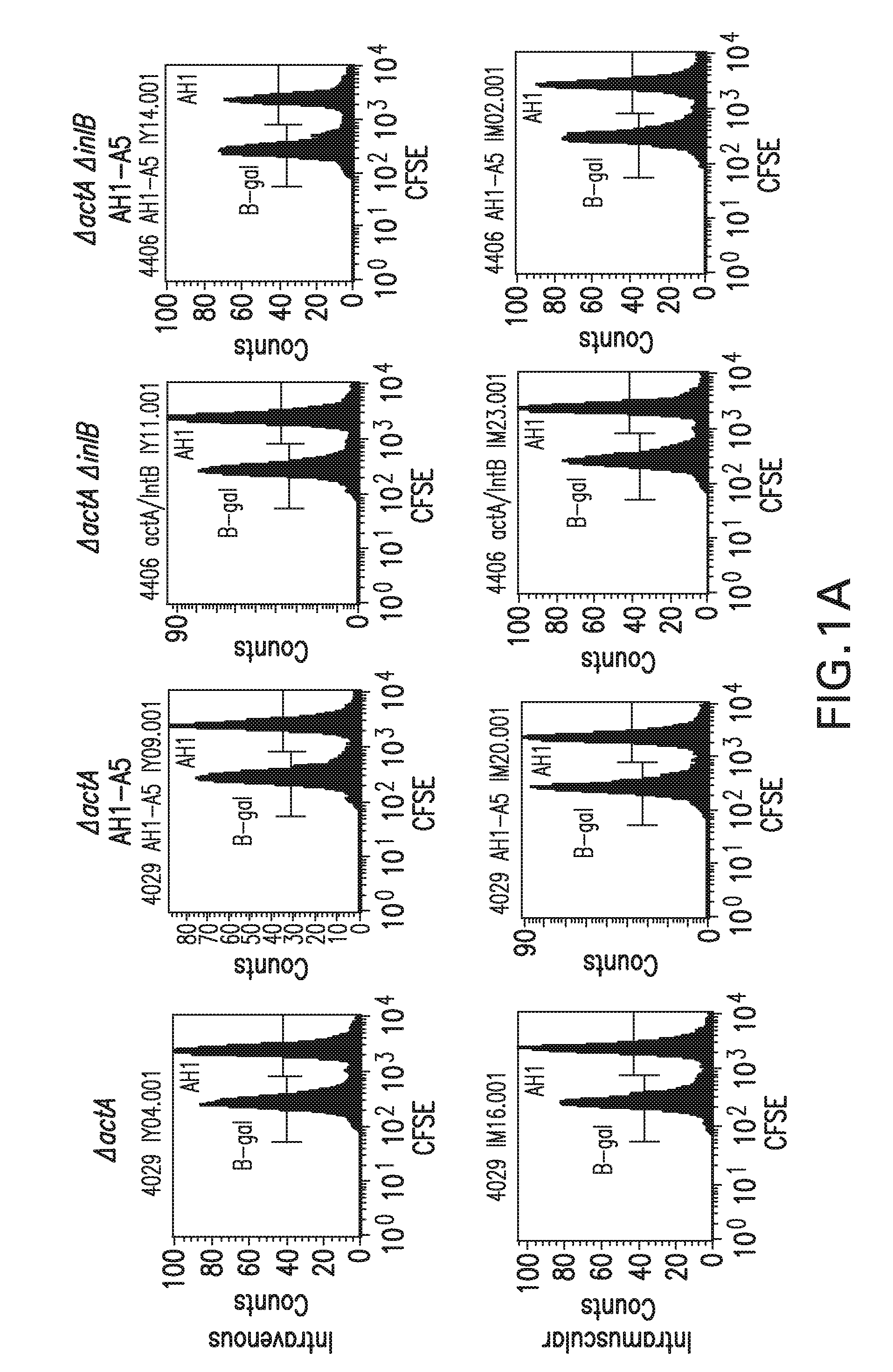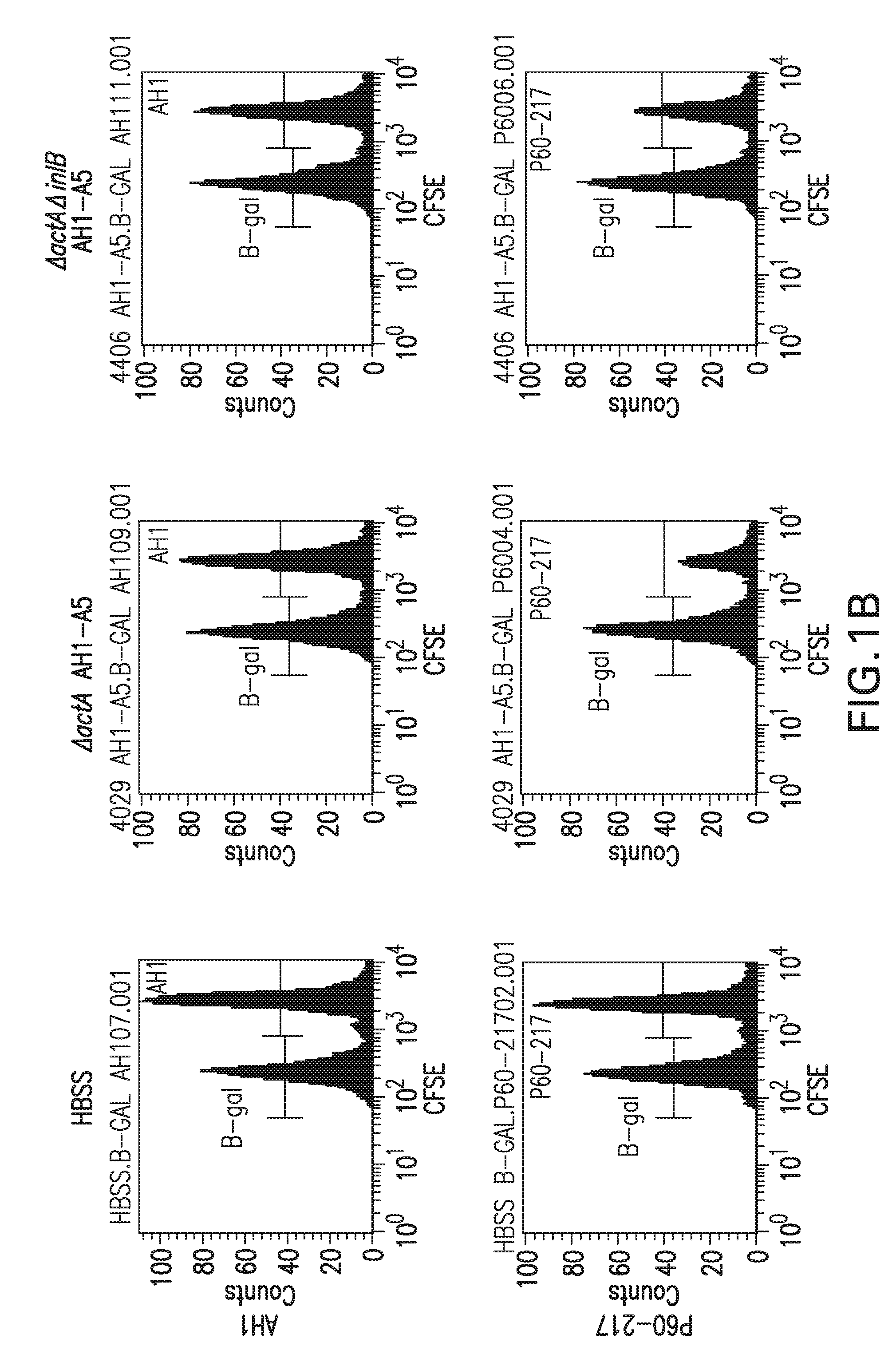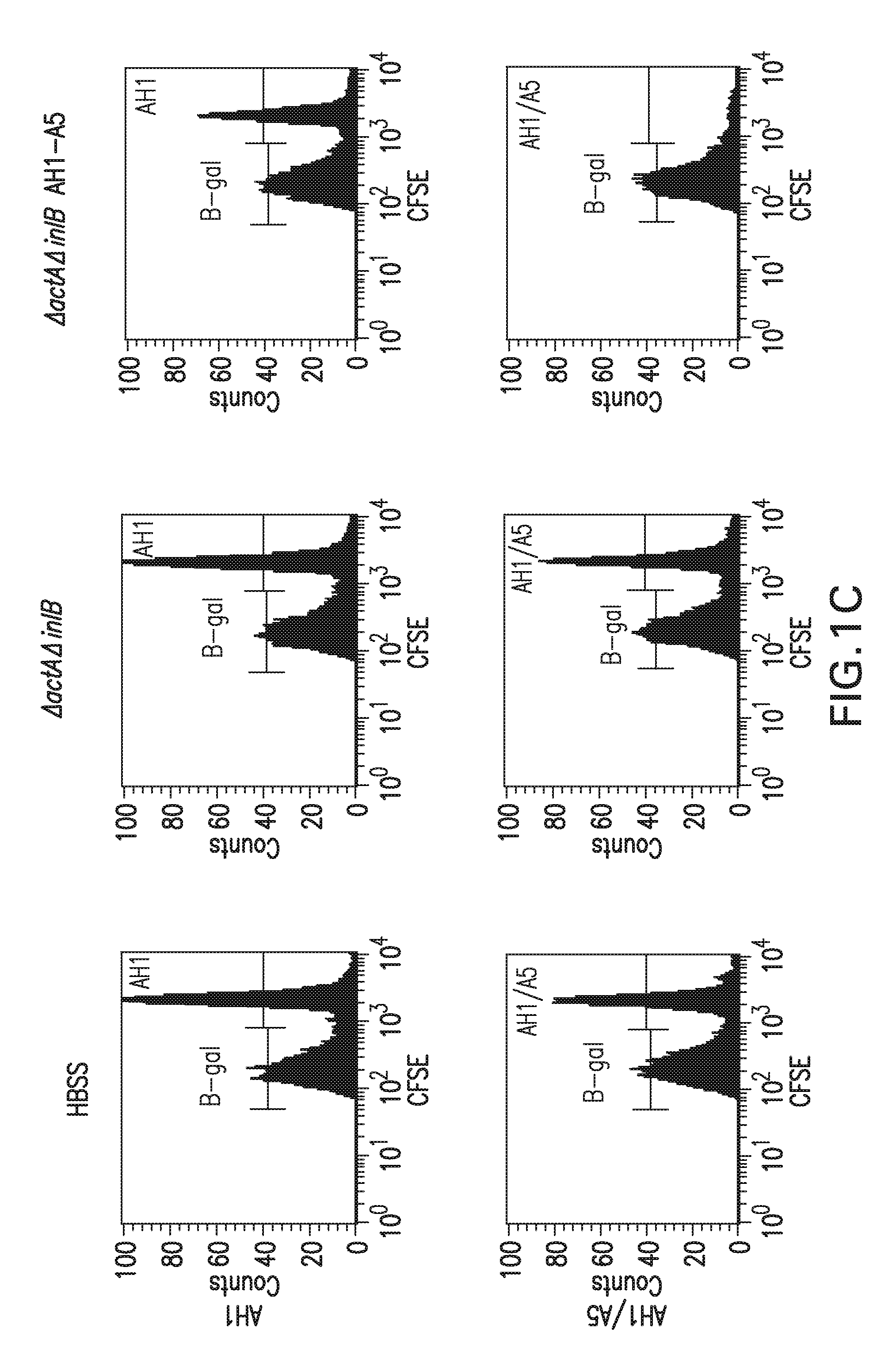Listeria attenuated for entry into non-phagocytic cells, vaccines comprising the listeria, and methods of use thereof
a listeria and non-phagocytic cell technology, applied in the field of attenuated bacteria, can solve the problems of unable to elicit a cell-mediated immune response, potentially deleterious to a recent organism, and potentially deleterious to the recipient organism,
- Summary
- Abstract
- Description
- Claims
- Application Information
AI Technical Summary
Benefits of technology
Problems solved by technology
Method used
Image
Examples
example 1
Construction of Mutant Listeria Strains
A. Preparation of Mutant Listeria Strains.
[0222]Listeria strains were derived from 10403S (Bishop et al., J. Immunol. 139:2005 (1987)). Listeria strains with in-frame deletions of the indicated genes were generated by SOE-PCR and allelic exchange with established methods (Camilli, et al, Mol. Microbiol. 8:143 (1993)). The mutant strain LLO L461T (DP-L4017) was described in Glomski, et al, J. Cell. Biol. 156: 1029 (2002), incorporated by reference herein. The ΔactA mutant (DP-L4029) is the DP-L3078 strain described in Skoble et al., J. of Cell Biology, 150: 527-537 (2000), incorporated by reference herein in its entirety, which has been cured of its prophage. (Prophage curing is described in (Lauer et al., J. Bacterial. 184:4177 (2002); U.S. Patent Publication No. 2003 / 0203472).) The LLO− mutant (DP-L4027) (Lauer et al., J. of Bacteriology, 184:4177-4186 (2002)), and LLO Δ26 (DP-L4042) (Decatur et al, Science 290:992 (2000)) were also described...
example 2
Listeria Pathogenicity Studies
[0263]The median lethal dose (LD50) of the some of the mutant Listeria strains was determined by IV infection of mice. Three to five female C57BL / 6 micer were infected IV with three 5-fold dilutions of the indicated strain. The mice were monitored daily for 10 days and sacrificed when they showed signs of distress. The median lethal dose was calculated. The data is shown in Table 1, below. The results show that the mutant Listeria strains that are deficient with respect to internalin B (ΔinlB, ΔactAΔinlB, and ΔactAΔinlAB) are less toxic when combined with an actA deletion. The ΔinlB only strain shows toxicity similar to wild-type Listeria.
TABLE 1Attenuated Listeria monocytogenes strainsPathogenicityLD50(cfu) in C57BL / 6miceStrainGenotypePhenotypeParentalDP-L4056Wild type;Wild-type1 × 10510403S, phagefreeDP-L4406ΔinlBImpaired inlB-mediated1 × 105infectionDP-L4029ΔactADefective cell-to-cell1 × 108spreadΔactAΔinlBNo host actin nucleation;1 × 108defective ce...
example 3
Assessment of In Vivo Cytotoxic Activity in Mice Vaccinated with Listeria monocytogenes
[0264]A series of studies were done to assess the ability of vaccinated mice to lyse antigen specific target cells in vivo. In the first study, Balb / c mice were vaccinated either intraveneously (IV) or intramuscularly (IM) with Listeria monocytogenes strains DP-L4029 (ΔactA), DP-L4029 ΔinlB (ΔactAΔinlB) and the same strains engineered to express AH1-A5 according to Table 2. The Listeria constructs expressing AH1-A5 also express hemolysin-deleted LLO and truncated OVA (see Example 1.C, above). The vaccination dose was 0.1 LD50. A target cell population was prepared by harvesting the spleens of 10 naïve Balb / c mice in RPMI 1640 medium. The cells were dissociated and the red cells lysed. The white blood cells were counted and split into two equal populations. Each group was pulsed with a specific peptide, either target (AH1, SPSYVYHQF (SEQ ID NO:8), from SynPep, Dublin, Calif.) or control (β-gal, TP...
PUM
| Property | Measurement | Unit |
|---|---|---|
| concentration | aaaaa | aaaaa |
| concentrations | aaaaa | aaaaa |
| median survival time | aaaaa | aaaaa |
Abstract
Description
Claims
Application Information
 Login to View More
Login to View More - R&D
- Intellectual Property
- Life Sciences
- Materials
- Tech Scout
- Unparalleled Data Quality
- Higher Quality Content
- 60% Fewer Hallucinations
Browse by: Latest US Patents, China's latest patents, Technical Efficacy Thesaurus, Application Domain, Technology Topic, Popular Technical Reports.
© 2025 PatSnap. All rights reserved.Legal|Privacy policy|Modern Slavery Act Transparency Statement|Sitemap|About US| Contact US: help@patsnap.com



